What is thorny plum and how to grow a tree?

Ternosplum is a rather unusual fruit tree. As the name implies, it is a hybrid of blackthorn and plum. The plant is quite hardy, so it is not difficult to grow it on your site.
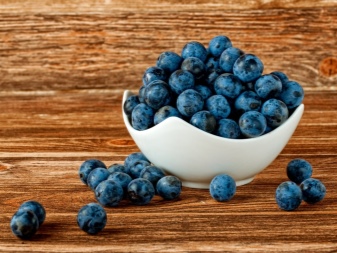
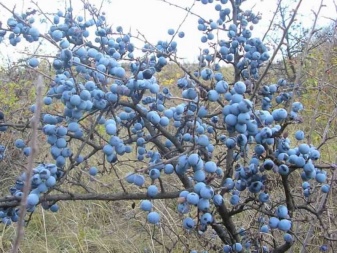
general description
For a long time, this plant was considered a variety of blackthorn. Its fruits differ from ordinary plums only in a sweeter taste. The branches of the shrub grow up to 3-4 meters in height. They are covered with small, elongated leaves. In the spring, the bush is decorated with light flowers, and then the plant looks very beautiful.
During the fruiting period, dark large berries appear on the tree. There is a bone inside each such fruit. The berries themselves are tasty, but quite tart. The flavor features of the berries depend on how early they were picked. The longer the fruits ripen, the sweeter their taste.
The blackthorn has many positive characteristics that it inherited from the plum and the turn.
- Fertility. The tart fruits appear on the tree in late summer. They are usually harvested in the fall. Delicious berries can hang on the tree until the onset of frost. This will only improve their taste.
- Frost resistance. Ternovka is resistant to frost. Therefore, it can be safely grown even in cold regions of the country. The plant is able to withstand sudden changes in temperature, as well as recover from frostbite of the root system.
- Drought tolerant. The blackthorn is also not afraid of the heat. She does not need additional care in dry weather. The surface of the trunk is not damaged by the sun or cracked.
In general, thorny plum is a very strong and hardy plant that can grow even in the most inappropriate conditions. The shrub grows very quickly and already in the first years after planting pleases the owners of the site with an excellent harvest.
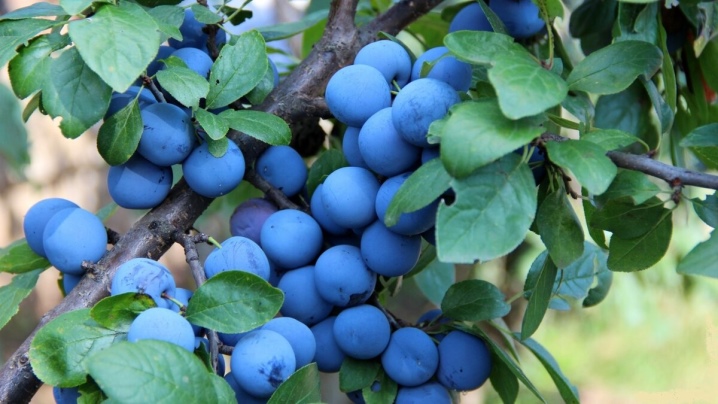
Popular varieties
Having decided to plant a blackthorn on your site, it is worth choosing the most suitable variety. The most popular are the following varieties of the thorny plum.
- Burluksky. This variety of thorny plums is considered one of the most productive. Its fruits ripen in September. The berries growing on the branches of the bush are dark and large. The plant itself takes root well in the garden. It feels good both in the sun and in the shade.
- "Large-fruited". As the name implies, the main difference between this variety is large fruits. A good gardener can harvest about 30 kg of a crop from one bush. The berries are usually harvested at the very beginning of autumn.
- "Uzbek". This variety of thorny plums bears fruit throughout September. The berries are deep purple in color. Their taste is pleasant, not too tart.
- "Large-fruited early." The main difference between this variety is that the bushes begin to bear fruit early enough. Delicious berries can be harvested from them at the end of August. At the same time, the plant does not have a high yield. Such a blackthorn is great for growing in the Moscow region.
- "Autumn". This variety of blackthorn is late-ripening. On the bushes grow elongated berries with a dark skin and juicy green flesh. To enjoy the delicious fruits, they should be picked in the second half of autumn.
- "Solyanovsky". This is one of the best hybrids. The garden thorn is frost and drought resistant. The shrub bears excellent fruit. The harvested berries have a pleasant taste with light tart notes.
- "Super-abundant". A short bush bears fruit well and does not need special care. Berries appear on it very early. They begin to darken almost immediately. You need to start harvesting when they turn almost black. At this time, the berries will already be tasty and soft.
On one site, you can plant not one, but several different varieties of thorny plums.
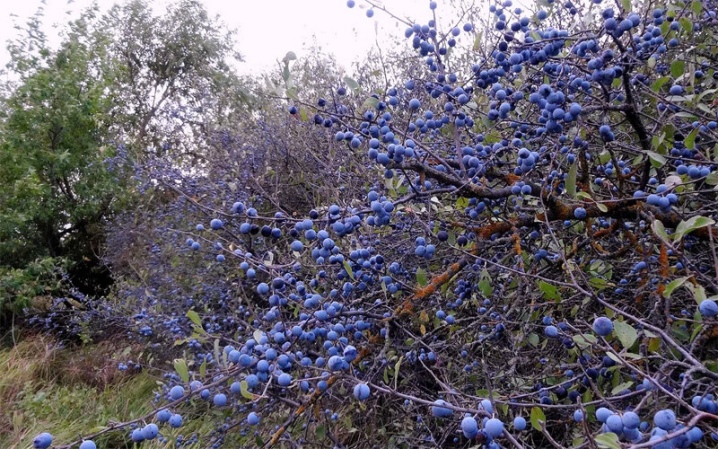
Landing
In order for young seedlings to take root on the site, they must be properly planted. The planting process of thorny plums consists of the following stages.
- First you need to prepare the site. It is necessary to dig one or more holes of a suitable size on it. The distance between them should be within 5 meters.
- Pour 5 kilograms of humus into each pit, and add a glass of dry wood ash. Additionally, you can add a small amount of mineral fertilizers there. Typically, gardeners add 40 grams of potassium sulfate to each pit, as well as 100 grams of superphosphate.
- Further, a small amount of earth is poured into the pit. As a result, it should be half full. If done correctly, the roots of the seedling will not come into contact with the fertilizer.
- Young plants must be immersed in prepared pits. Their roots must be carefully straightened, and then covered with earth. The soil around the trunk should be well compacted.
- Next, the young plant should be watered. It is recommended to lay a dense layer of mulch around the trunk. This will help retain moisture in the soil as well as protect the plant from weeds.
After planting, the crown of a young seedling must be cut off immediately. In total, its height should not exceed 80 centimeters.

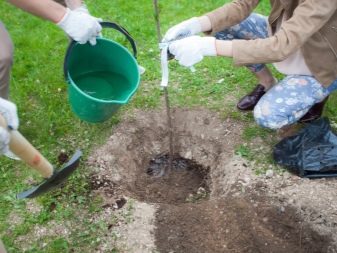
The nuances of care
Ternoslum is a rather unpretentious plant. Therefore, it does not need special care. In the process of growing a shrub, it is worth remembering the following procedures.
Top dressing
Since the soil is abundantly fertilized when planting a tree, the blackthorn does not need additional fertilizing in the first years of life. For the first time, fertilizers are applied to the soil only in the third year of the life of the bush.
In the future, the plants are stably fed once a year. Usually this procedure is carried out in the middle of autumn. Rotted manure is used to feed the blackthorn.
Before fertilizing, gardeners always dig up the soil well, and also remove all weeds from the site. After completing this procedure, the soil next to the trunk is mulched with dry straw, sawdust or old foliage.
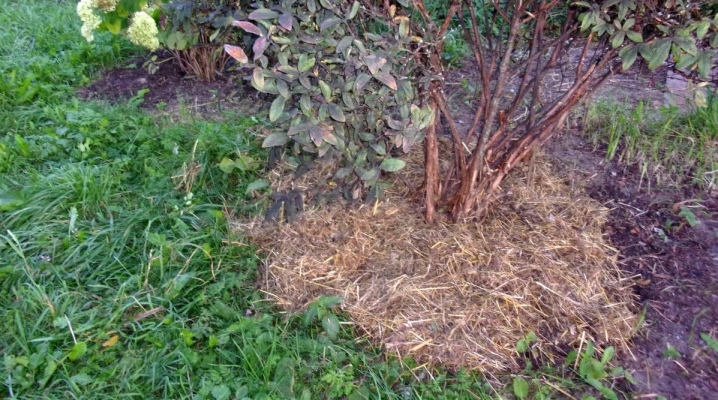
Watering
In the first few months after planting, the plants need to be watered. This is usually done once or twice a week. The frequency of watering depends on the climate. If the soil remains damp after rain, do not water it further.
Ternosplum is drought tolerant, so you don't need to water it too often. A short drought cannot do much harm to a young plant.
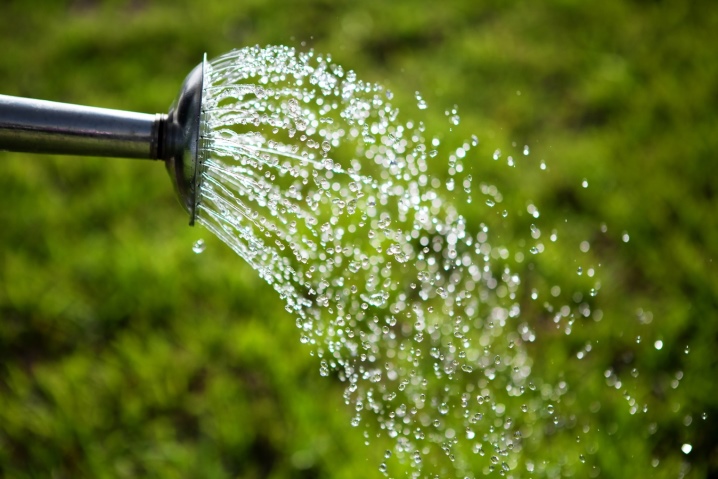
Pruning
Like many other plants in the garden, thorny plum also needs timely pruning. This procedure helps to prevent strong growth of shoots. Therefore, the shrub bears fruit well, and its berries in the fall are convenient to pick from the branches.
It is recommended to prune the plant three times a year. For the first time, all unnecessary branches are removed from the bush at the end of March. The plant is then pruned in late June and autumn. There are several variations of this procedure.
- Sanitary. The pruning process removes any dried or damaged branches. This helps to improve the health of the tree, as well as extend its life. In order for the plant to bear fruit better in the next season, some of its branches need to be further shortened.
- Thinning. It is worth carrying out this procedure if the branches of the plant strongly interfere with each other. At this time, most of the shoots are removed. At this stage, gardeners leave only 4-5 main branches. Such pruning can significantly increase the yield of the bush.
- Forming. This procedure is carried out in the first years after planting the bush. Correct cropping will make it look neater.
It is worth remembering that thorny plum recovers very quickly after pruning. Therefore, gardeners need not be afraid to remove excess vegetation from the bush.
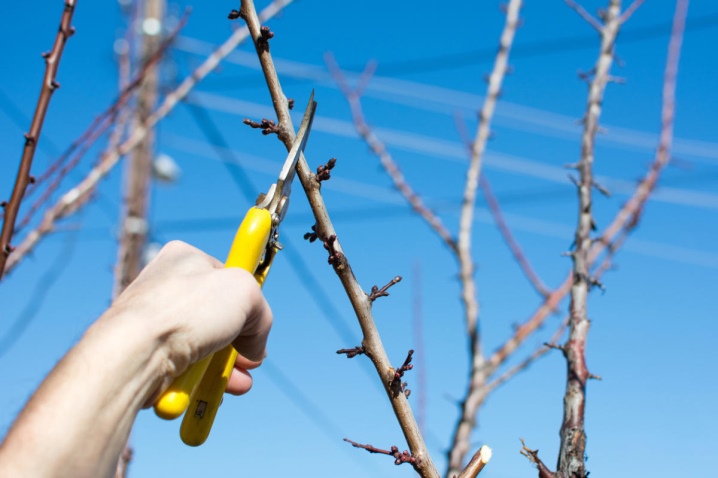
Wintering
Ternovka is a winter-hardy plant, so it is not afraid of cold weather. The danger to the plant is not frost, but rodents, which damage the bark of trees. Therefore, it is necessary to protect the thorny one from them.
The trunk of the bush is usually wrapped in a dense layer of agrofibre or covered with roofing material.
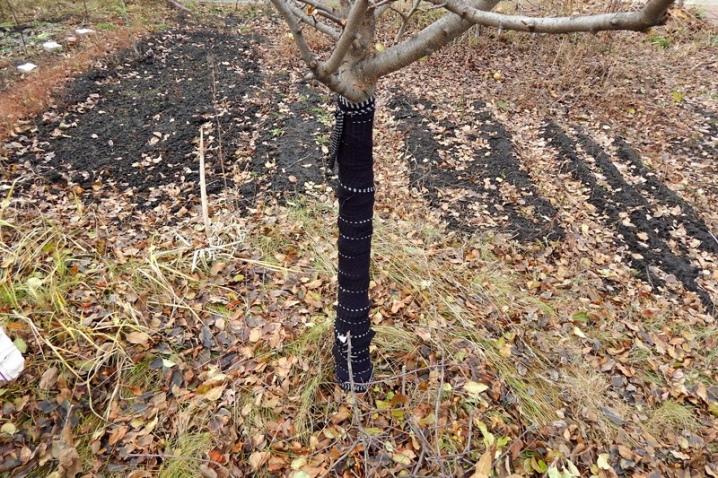
Reproduction
Now there are several ways to breed thorny plum. The most popular are two main methods.
- Reproduction by seedlings. Most often, gardeners use young root shoots to propagate bushes. Strong shoots are dug out in advance. This can be done both in autumn and spring. The dug out seedlings are carefully examined. If they have a well-developed root system, they are immediately transplanted to a new place. Otherwise, the shoots are carefully cut off, and then placed in nutrient soil for several months.
- By vaccination method. The first step is to select a plant to which you can graft the blackthorn. Winter-hardy plums or cherries can be used as a stock. They are grafted into thorny plants according to the same principle as other fruit trees. This plant propagation method is great for rare varieties.
There is also a method of propagating a shrub by seeds, but it is quite complex and laborious, therefore it is not very popular among gardeners.
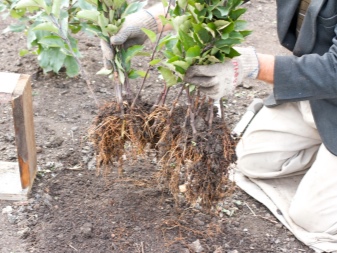
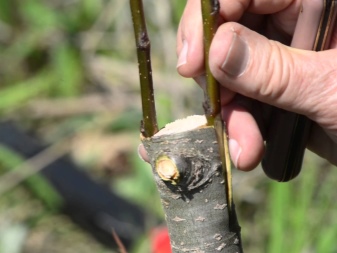
Diseases and pests
Ternoslum is not afraid of most common diseases and pests. However, there are diseases that gardeners should be wary of.
- Fruit rot. The main signs of this disease are a layer of rot on the fruits, as well as wilting of young shoots. Noticing that the plant is infected, it must be treated with iron or copper sulfate.
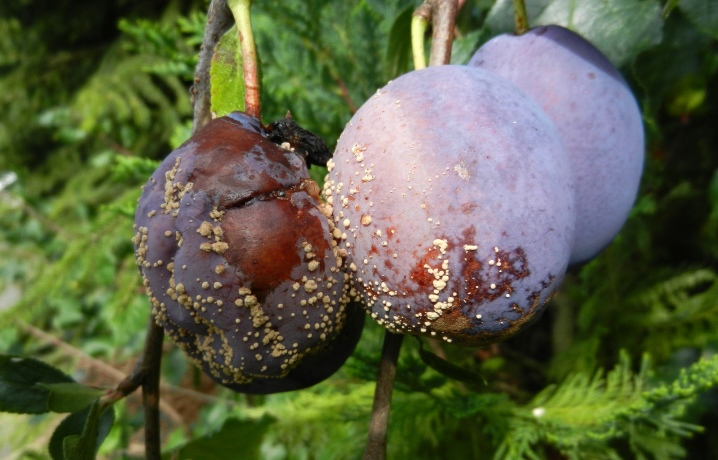
- Plum pockets. This fungal disease is also quite common. The fruit on the infected tree grows and becomes deformed. In some cases, bones do not form inside. There are no cures for this disease. Novice gardeners can only be helped by timely prevention. So that the plant does not hurt, it must be treated with a Bordeaux mixture. This product is used to protect the tree twice a year. For the first time, thorny plum is sprayed during its flowering period. The second time, the procedure is carried out during the ripening of the berries.
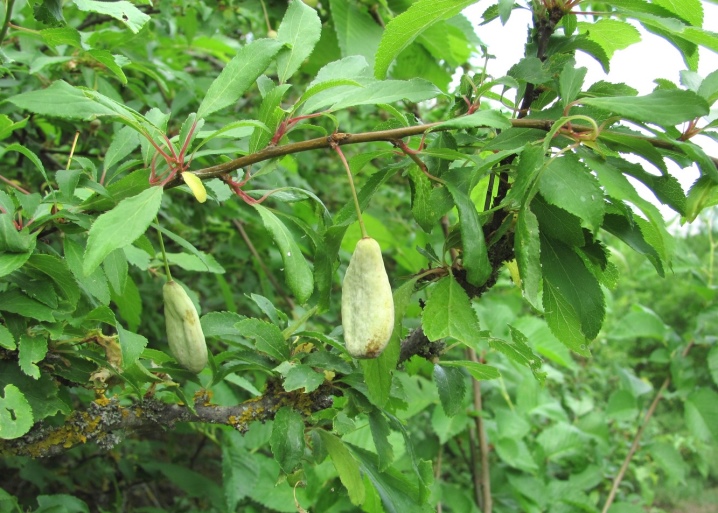
- Dwarfism. In a diseased plant, the leaves are deformed, and the fruits are significantly reduced in size. The disease is practically not cured. Therefore, infected trees have to be removed from the site. To prevent the disease from spreading in the future, all garden tools are thoroughly disinfected after use, and the branches and leaves are burned.
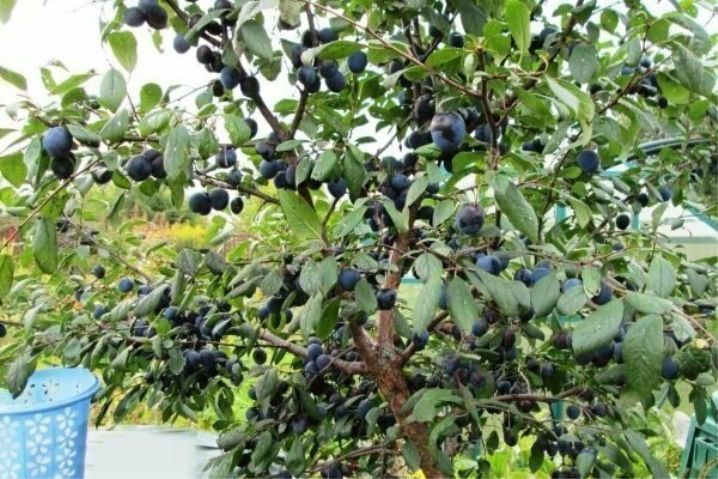
If you do everything right, the thorny plum will not hurt either in spring or summer.
Harvesting and storage
It is recommended to harvest the fruits after they are fully ripe. Harvest time depends on the climate and the type of plant.
Most gardeners prefer to store the berries for the winter. It is recommended to put the fruits in boxes or convenient containers. They shouldn't be too big. As a rule, berries are placed in a box in two layers. Fruits that are harvested for storage should be slightly unripe. In this case, they will be stored much longer. Boxes with stubborn can be placed in a cold room or cellar. There they can be stored for several months.
Berries to be processed should be picked after they become soft and juicy. They can be dried, canned, or frozen. After processing the berries, their shelf life is significantly increased.
Ternosplum is a great plant option for a small plot or large garden. It does not need special care and regularly pleases its owners with delicious berries. Even beginner gardeners can grow thorny plums on their site.
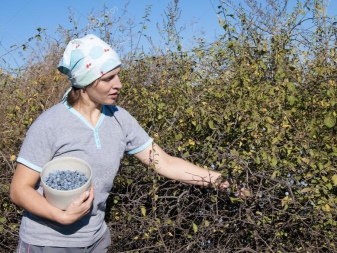
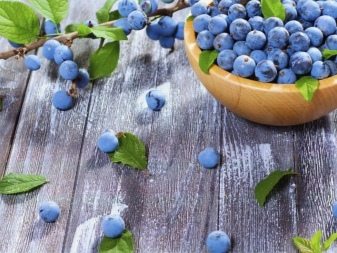













The comment was sent successfully.